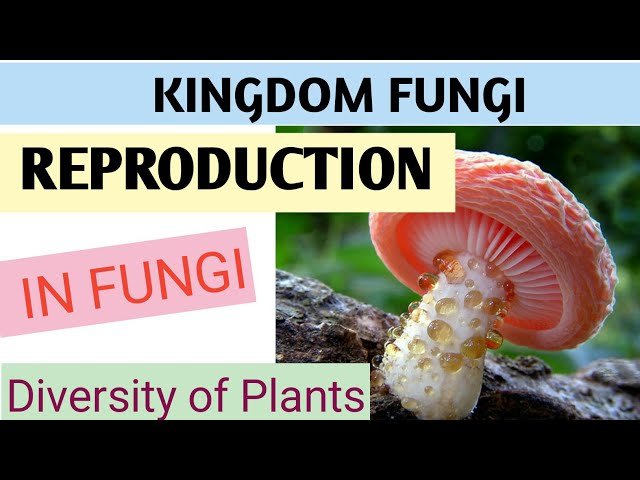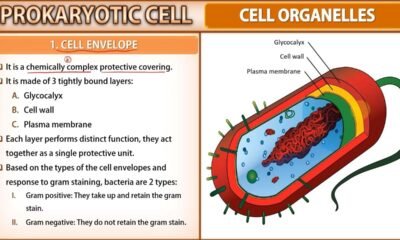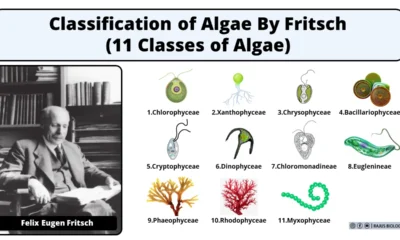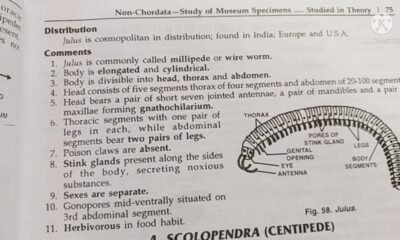Blog
Reproduction in Fungi (3 Types of Reproduction) | Mycology

In this article we will discuss about reproduction in fungi :- Vegetative reproduction in fungi, asexual reproduction in fungi and sexual reproduction in fungi
Reproduction in Fungi
- The production of new individuals from parent organisms is called Reproduction.
- Reproduction in fungi takes place by vegetative, asexual and sexual methods.
1. Vegetative Reproduction in Fungi
- A portion of body becomes separated off and gives rise to new individual is called vegetative reproduction
- In vegetative reproduction the union of mature sex cells or sex organs does not involve.
- The common method of vegetative reproduction are: Fragmentations, Fission and Budding
A. Fragmentation
- In this process, the mycelium breaks into two or more similar fragments either accidentally or due to some external force.
- Each fragment grows into a new mycelium.
- E.g., Aspergillus, Alternaria, Mucor and Rhizopus
B. Fission
- The parent cell splits into two equal halves.
- Each of these halves then develops into a new individual
- E.g., Yeast
C. Budding
- The parent cell produces one or more projections called buds.
- The bud detaches and grows into a new individual.
- E.g., Yeast, Ustilago
2. Asexual Reproduction in Fungi
- It is the type of reproduction, a special reproductive structures called spores or propagates are formed.
- About 20% fungi have only asexual reproduction.
- The fungal spores always result from mitosis and hence are described as mitospores.
- The different types of asexual spores in fungi are: Zoospores, Conidiophore, Chlamydospores, Oidia and Aplanospores
A. Zoospores
- They are flagellated, motile spores produced inside structures called zoosporangia.
- These spores do not have a cell wall.
- E.g., Achyla, Pythium, Phytophthora, Albugo
B. Conidiophore or Conidia
- These are non-motile spores produced singly or in chains at the tip of the hypha branches that are called conidiophores.
- E.g., Aspergillus and Penicillium.
C. Chlamydospores
- These are thick walled resting spores which arise directly from hyphal cells.
- They store reserve food.
- E.g., Ustilago
D. Oidia
- These are spore like structures formed by the breaking up of hypha cells.
- They do not store reserve food and hence cannot survive under unfavourable conditions.
- E.g., Collybia, Coprinus
E. Aplanospores
- These are non-motile, thick wall spores produced inside structures called sporangia.
- They are dispersed by wind or water currents.
- E.g., Mucor, Rhizopus and Pilobolus
3. Sexual Reproduction in Fungi
- Sexual reproduction occur in all groups of fungi except Dueteromycetes (Fungi imperfecti).
- Sexual reproduction is carried out by fusion of compatible nuclei of two parent cell.
- The process of sexual reproduction involves three phases:
- Plasmogamy: fusion of protoplasm of two compatible haploid cells.
- Karyogamy: fusion of the two haploid nuclei within the dikaryotic cell.
- In Phycomycetes: Karyogamy just after plasmogamy
- In Ascomycetes and Basidiomycetes: Karyogamy after some time.
- Meiosis: The diploid zygote undergoes meiosis, a type of cell division that reduces chromosome number by half. This produces haploid spores, which can germinate to form new fungal hyphae.

 Blog7 months ago
Blog7 months ago[PPT] Human Reproduction Class 12 Notes
- Blog7 months ago
Contribution of Indian Phycologists (4 Famous Algologist)
- Blog7 months ago
PG TRB Botany Study Material PDF Free Download

 Blog7 months ago
Blog7 months agoCell The Unit of Life Complete Notes | Class 11 & NEET Free Notes

 Blog7 months ago
Blog7 months ago[PPT] The living world Class 11 Notes

 Blog7 months ago
Blog7 months agoClassification of Algae By Fritsch (11 Classes of Algae)

 Blog7 months ago
Blog7 months agoJulus General Characteristics | Free Biology Notes

 Blog7 months ago
Blog7 months agoPlasma Membrane Structure and Functions | Free Biology Notes














